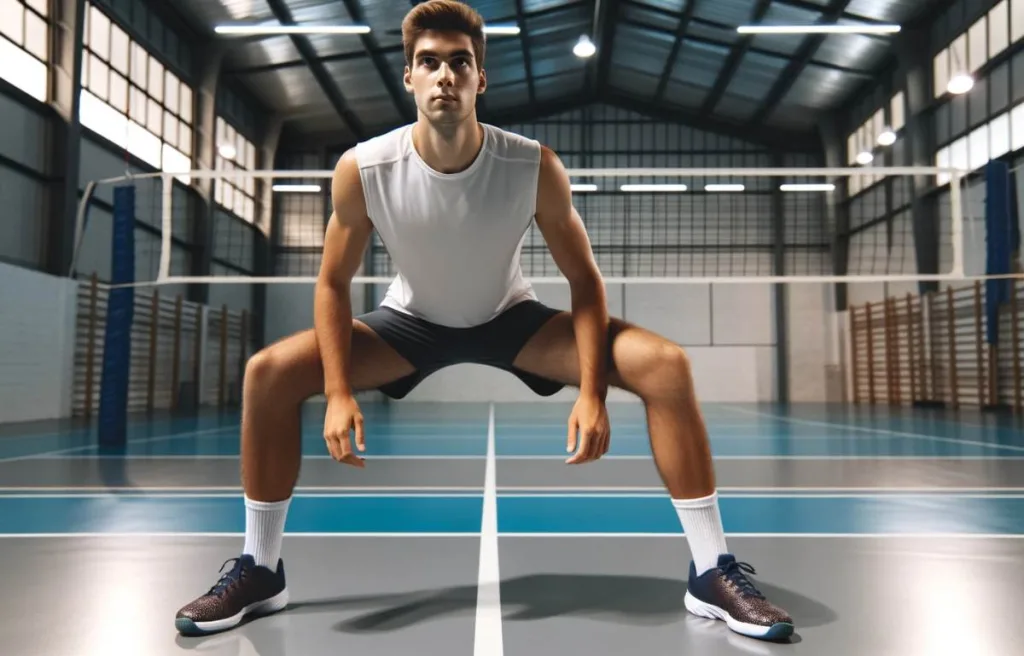What is a Dig in Volleyball? Learn the Techniques and Drills

You have heard a lot of people saying, “Volleyball players are superheroes.”
It’s primarily because of the incredible digs they make on the court.

Digging in volleyball is challenging, as it requires extreme focus and alertness.
Key Takeaway: A dig in volleyball is a defensive technique where a player quickly hits the ball into the air before it touches the ground to keep it in play after an opponent’s attack. The attack could be either a spike or a tip.
In this article, I will discuss the dig concept in volleyball and clarify some common misunderstandings.
We’ll look at its different types, and I will show you, step by step, how to do them right.
Whether you’re just starting or looking to improve, this guide will help you understand and master this vital volleyball skill.
Fundamentals of Digging
Before discussing the essentials of digging in volleyball, it’s crucial to clarify some common misconceptions about this skill.
Many believe that a dig only happens when a DS reacts to spikes.
However, this isn’t the entire truth.
A dig also occurs when defending against softer attacking moves like tips or dinks.
So, if a player successfully defends against these attacks, it’s still considered a dig.
Another widespread misunderstanding is about the first contact following a serve.
Some might say it counts as a dig, but this isn’t accurate.
Regardless of how it looks, the initial reception of a serve does not qualify as a dig.

The last misconception is about recovering from blocks.
It’s important to note that a play where you recover the ball after an opponent’s block does not constitute a dig.
In simple terms, we only refer to a defensive action as a dig when responding to an attack, be it a spike or a tip.
1) Advantages of a Dig in Volleyball
It’s a move that turns a potential score for the opponent into an opportunity for your team to attack.
I have compiled 5 points that will help you to understand its potential.
2) Key Elements of Digging
If you want to master the art of digging, remember that it is more than quick reflexes.
It starts with the proper foundation.
Your posture, positioning on the court, and mental readiness are crucial components that set you up for success.
Let me break it down for you.
These key elements are the first step to becoming a proficient digger.
And don’t worry.
In the next section, I’ll guide you through executing a dig correctly using a step-by-step procedure.
How to Dig a Volleyball Correctly?
Following the key elements I’ve discussed earlier, let’s explore a step-by-step approach to digging a volleyball effectively.
This approach is easier to follow and helps you avoid shanking.
1) Adopt the Right Stance
Stand with your feet spread out so they are as far apart as the width of your shoulders.
This posture helps you stay balanced and stable.
It also makes it easier to move quickly in any direction during the game.
Bend your knees a bit and lean forward, keeping your weight on your toes.
Hold your arms straight ahead with your hands together, ready to hit the ball.

2) Stay Focused and Anticipate the Play
Keeping your eyes on the ball and observing the opposing hitter’s approach is essential.
As I mentioned in my other guides, mental readiness is the key to success in volleyball.
So, during the dig, you must be alert and ready to react quickly to the ball’s trajectory.
3) Move Efficiently to the Ball
Employ quick footwork, like a crossover step, to move laterally or forward toward the ball.
Position yourself so the ball gets aligned with your midline for optimal control.
4) Execute the Dig
When making contact, use your forearms, not your hands.
Your platform should be firm and angled correctly towards your intended target.
The goal is to absorb the ball’s momentum and direct it towards your setter.
The general rule is to add your full energy when the ball approaches you slowly.
Conversely, when the ball travels faster or is a hard spike, it adds less energy when sending it to the setter.
5) Recover Quickly and Prepare for the Next Play
After the dig, it’s essential to regain your ready position quickly.
Stay prepared for another dig or to transition into an offensive role.
5 types of Digging in volleyball
In volleyball, there are different types of digs depending on the situation.
Each type has its unique technique and applies differently.
You may also find fluctuation in their names, but I have compiled the most famous five types.
1) Stationary Dig
The players use the stationary dig when the ball comes directly to them.
You don’t have to move much in it.
Just stand in your ready position.
As the ball approaches, bend your knees, lean forward slightly, and extend your arms.
It will create a platform for the ball to bounce off.
Your goal should be to control the ball effectively and direct it to your setter or another player.
2) Crossover Dig
The crossover dig is best for balls that are within a step’s reach, especially to your side.
Its steps are pretty simple.
Quickly move towards the ball in your ready position by crossing one foot over the other.
Extend your arms towards the ball and aim to make contact with your forearms.
Focus on balance and quick recovery to your base position after the dig.

3) Pancake
The pancake is a last-resort move when you can’t reach the ball in time with a regular dig.
Its execution is more complex than other dig types and requires a lot of courage from the defensive player.
To execute it, dive towards the trajectory of the ball.
As it’s about to hit the ground, slide your hand, palm down, beneath it.
The back of your hand is a surface for the ball to bounce off.
Keeping your hand firm and flat is crucial, providing enough resistance for the ball to rebound.

4) Overhead Digging
Overhead Digging is well suited for high balls that are difficult to reach with a forearm pass.
Some call this technique an “overhand” dig, but it refers to the same concept.
To execute it, position yourself beneath the ball.
Use an overhead hand-setting motion to guide the ball upwards like a setter.
Your fingers and hands should be firm to direct the ball accurately.
This technique is similar to the setting but is used defensively.
5) Diving
Lastly, we have the last type of volleyball dig, the diving dig, or you can simply call it “diving.”
It is suitable for reaching balls that are far from your position.
From your ready posture, launch yourself towards the ball in a dive.
Extend your arms out to contact the ball while you are in mid-air.
Also, aim to direct the ball upwards and towards your teammates.
After the dive, quickly recover back to your feet.
If you still need clarification about the difference between pancake dig and diving, let me explain it to you in simple words.
The pancake is more about a flat, hand-based last-second save.
On the other hand, diving involves a full-body stretch to reach and redirect the ball.

Digging Drills – Beginners to Advance
Volleyball coaches often recommend a variety of digging drills, each designed with a specific purpose.
However, for this section, I’ve selected two of the most commonly practiced drills that cater to varying skill levels.
The first drill is perfect if you’re new to volleyball and don’t have a partner to practice with.
It helps beginners get comfortable with digging in a solo practice setting.
The second drill is more advanced and requires the assistance of a partner.
So, without any further break, let’s move towards the steps of each drill.
1) For Beginners – Wall Ball Dig Drill
- Find a solid wall or volleyball rebound net.
- Stand about two to three feet away from the wall.
- Gently bounce the volleyball against the wall, aiming for it to return to where you can dig it.
- Use your digging technique to send the ball back to the wall, and keep doing this to get a feel for the ball.
2) For Advanced Players – Dive and Roll Dig Drill
- Have someone, like a partner, stand on the other side of the volleyball net.
- They should toss or spike the ball at different angles and distances to you.
- Practice diving towards the ball to dig it, then roll to recover quickly and get back up.
- After each dig, quickly prepare for the next ball, focusing on fast reflexes and controlled digs.
What is the Difference between Passing and Digging?
The main difference between a dig and a pass in volleyball is their purpose and context.
Players perform digs as defensive responses to attacks from the opposing team, and statisticians record them.
On the other hand, players execute passes during non-attack scenarios.
For example, handling a ball that their team has mishandled or simply sending it over the net without intending to attack.
It’s essential to distinguish accurately between digs and passes for correct game statistics, reflecting different team play aspects.
Also, a team’s number of digs cannot exceed the number of attacks from its opponent.
This isn’t an official rule but a pattern observed through mathematical analysis of various volleyball matches.
Final Thoughts
Mastering the art of digging in volleyball is a journey that begins with understanding the basic concept and addressing common misconceptions.
From the stationary to the diving dig, each type serves its unique purpose and requires practice and precision.
Remember, every great dig contributes to the defense and sets the stage for a powerful offense.
Embrace these techniques and tips, and watch as your game reaches new heights!
